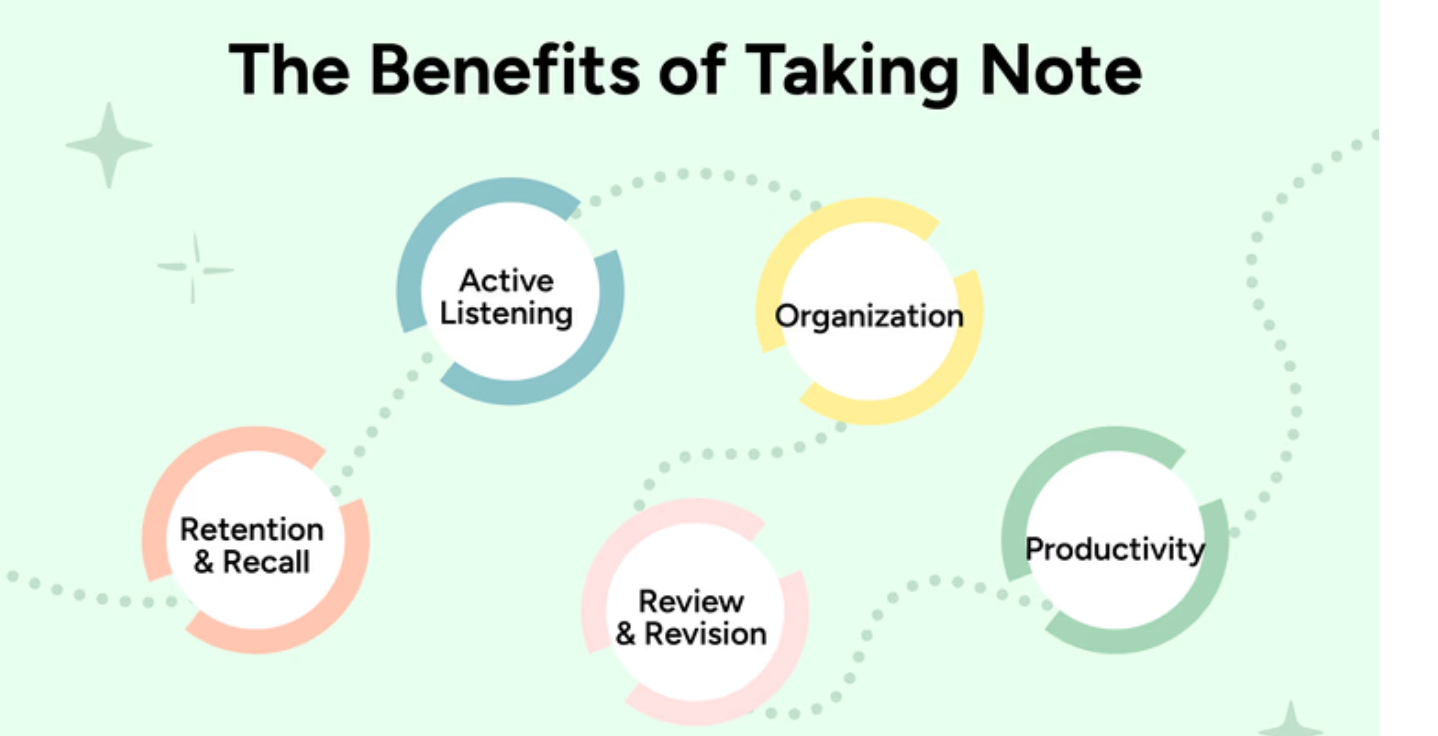Articles and Trivia
Write an articleNote-Taking Methods That Improve Retention

In an age of digital distraction and fast-paced learning, taking effective notes remains one of the most powerful tools students can use to retain information. Good note-taking doesn't just help you review—it actively engages your brain, improving understanding and long-term recall. Here are some tried-and-tested methods that can transform the way you take notes and study.
1. The Cornell Method
The Cornell method is a structured system that divides your page into three sections: cues, notes, and summary. During lectures, you take detailed notes in the main section. Later, you jot down key terms or questions in the left margin and summarize the topic at the bottom. This format encourages reflection and makes revision easier.
2. The Mapping Method
If you're a visual learner, the mapping method is for you. It involves creating diagrams or "maps" that connect ideas through branches and sub-branches. This is especially useful for subjects with complex concepts, like biology or history, as it shows relationships between topics clearly.
3. The Outline Method
Popular among students for its simplicity, the outline method organizes information in a hierarchical structure using bullet points or numbering. Major topics are listed first, followed by indented subtopics. It’s best for subjects with clear structure, like literature, economics, or law.
4. The Charting Method
For comparing facts or data, the charting method helps keep information organized. You create columns with categories and fill in details as you go. This is useful for subjects like science, statistics, or languages where comparison is key.
5. The Sentence Method
This straightforward method involves writing every new piece of information on a separate line as a sentence. It’s useful during fast-paced lectures, but may require rewriting or organizing later for clarity.
Why Note-Taking Works
Research shows that writing by hand improves memory because it involves deeper cognitive processing. Even if you prefer typing, actively summarizing and rephrasing what you hear helps your brain encode information more effectively.
Tips to Improve Retention
-
Review notes within 24 hours to strengthen memory.
-
Use colors, symbols, or underlining to highlight key points.
-
Test yourself on what you’ve written rather than just rereading.
-
Rewrite or organize notes after class to reinforce learning.
Mastering the right note-taking technique for your learning style can significantly boost your academic performance. Try different methods, refine your approach, and make note-taking an active part of your learning process.


